Everyone knows him as the genius director behind the works of E.T. The Extra Terrestrial (1982), Schindlers List (1993), the Indiana Jones franchise and many other films. Steven Spielberg played an integral role in the shaping of Hollywood culture and if not for his involvement, the face of cinema would not be what it is today. Yet just who is Spielberg? What is the method to his madness? What is it that has made him a household name among directors past, present and future?
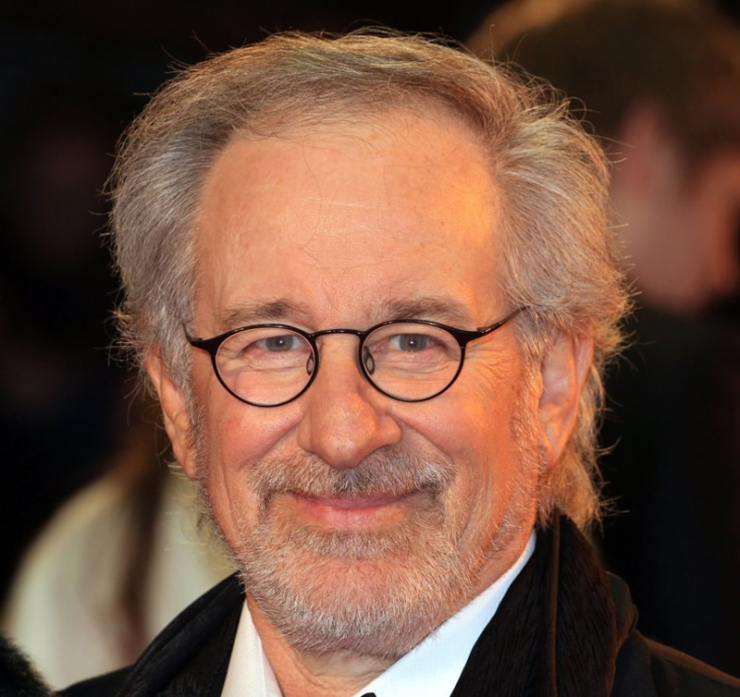
Steven Spielberg’s ability to seamlessly integrate strong meaning and layers of subtext into his movies is what makes him such an incredible director. Anyone can employ hidden symbols in their works but Spielberg possesses a rare talent for presenting them in unique, engaging and exciting ways. To be able to produce universally outstanding work across many genres and multiple generations is a credit to this man’s artistic talent and makes him one the absolute best directors working today.
Steven Allan Spielberg was born in 1946 in Cincinnati Ohio. His interest in film was sparked from a young age when he directed his first home film, a train wreck which he simulated by utilising his Lionel train set. It was in 1963 when he was just sixteen when he took his first true steps into cinema when he wrote and directed his first feature film titled Firelight, a 140 minute science fiction film about a group of scientists dealing with strange alien occurrences. The film had a $500 budget which was provided by his father and the cast was comprised from Spielberg’s peers at Arcadia High School, Spielberg’s sister Nancy was also included in one of the lead roles. The movie ran at the Phoenix Little Theatre, Spielberg’s local cinema. Spielberg himself advertised the production and managed to return his father’s $500 investment. Firelight may have been small but its impact was significant, forming the springboard which would later become Spielberg’s acclaimed movie Close Encounters of the Third Kind.
Spielberg had struggles with academia, having been rejected by the University of Southern California’s film school only to then be accepted into California State University as an English Student. While a student he managed to acquire an internship at Universal studios and it was while working there that he was offered the chance to make a short film. Amblin’, a 26 minute love story set during the hippie era, was the fruit of Spielberg’s labour. The film went on to win numerous awards and Universal was so impressed they offered Spielberg a seven year directing contract making him the youngest director ever to be signed on for a long term deal. Thus Steven Spielberg’s directorial career had begun.
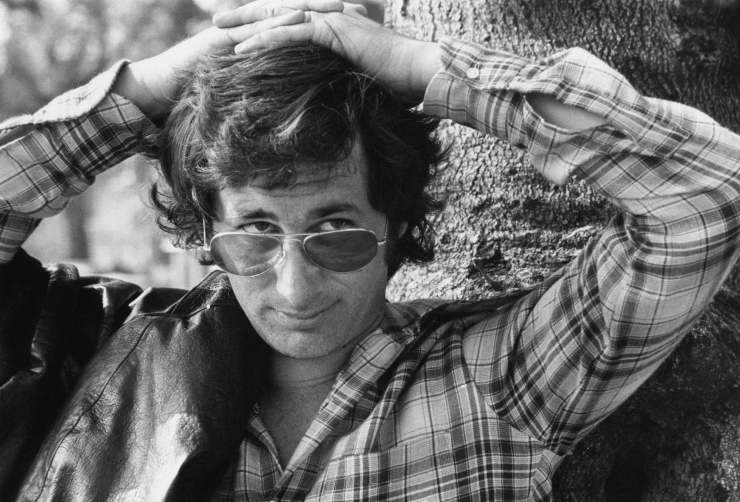
Hollywood has come a long way since 1975, when the award winning film adaptation of Jaws hit the movie screens. Despite the many difficulties Spielberg and his crew endured; the frequent malfunctions of the mechanical sharks, delays and water damage to name a few, the film went on to become a box office hit and it made Spielberg a household name. What was it about Jaws though that resonated with audiences? Was it the acting, the themes? You could say all of the above and more but it is the sheer fear factor that the audiences responded too. The mechanical sharks utilised throughout development were prone to malfunctioning so Spielberg decided it was best to employ tension and imply the beast’s presence. He successfully achieved this through the use of composer John Williams who wrote the ominous and chilling Jaws theme. By utilising the sea not as a barrier but as a curtain he left audiences reeling as if they too were in the water and in danger of being pulled under. It was this type of innovation and improvisation that made Spielberg so brilliant. If only he had signed on to direct the sequels, the franchise might not have fallen into such decline.
Spielberg is a master of many genres and he was fond of horror in his early days, succeeding Jaws with 1982’s Poltergeist. The film revolves around an American family who are harassed by ghostly beings. Death is commonly the staple of horror films, the tension and stress burdened onto the audience as they fret over who is to die and when. While Spielberg did not direct the project he did write the story and screenplay. Through this work, Spielberg proves that you do not need to kill anyone to invoke horror. Disappearance, mystery, the supernatural, these are all themes that can be combined to create a new brand of fear. What made Spielberg so innovative was that he did everything different, instead of focusing on violence and death to induce terror he left much to the imagination while menacing the audience in a variety of ways. Indeed Poltergeist went on to achieve great success and become recognised as a classic within the horror genre.
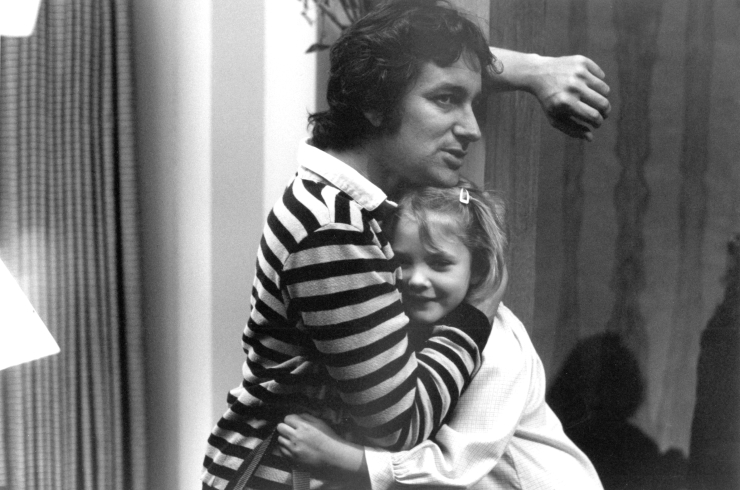
A director as acclaimed as Spielberg is known for more than just scaring his audiences, indeed he is exceptionally talented at drawing almost any emotion from his viewers and E.T. is such an example. No article dedicated to the works of Steven Spielberg would be complete without some mention of E.T. The film received universal acclaim and is regarded by many as Spielberg’s finest work. What still resonates to about the films production is the child-driven plot and how masterfully it is implemented. The theme of innocence is tangible as we observe the growth of Elliot’s and E.T’s relationship after they first meet. Their friendship is precious and the audience cannot help but empathise with their predicament as the pressures of both their respective worlds close in around them. E.T. became one of the top grossing films of all time and was nominated for nine academy awards winning four for best original score, best sound, best sound effects and best visual effects. The success of this film largely derives from Spielberg’s ability to make his audiences simply fall in love with E.T. (The alien). He persuades them to care for a creature that has, in most other films, been portrayed as an invader.
Many of Spielberg’s films have won notoriety for their music score and those successes can be attributed to composer John Williams. If you do not know Williams you might recognise some of his pieces; the Indiana Jones theme, E.T and of course Jaws. In addition he also composed the Star Wars theme (but that was not in collaboration with Spielberg). Spielberg and Williams first met in 1974 to collaborate over The Sugarland Express. Since then the two men began a collaboration that lasted more than thirty years with Williams composing almost all of Spielberg’s features save for a handful, The Colour Purple (1985) and the more recent Bridge of Spies (2015). Many of Spielberg’s successes can be attributed to Williams, there are few composers with the ability to create themes as memorable as he. Spielberg’s gift to evoke specific feelings in his audience is empowered by William’s incredible talent as a composer.
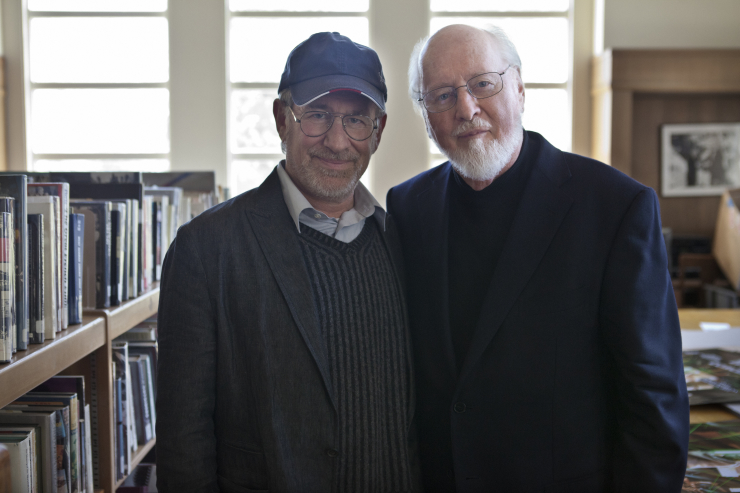
Of course, Spielberg is not infallible and not all of his movies have been blockbuster hits. He has directed his share of commercial failures. His 1971 film, 1941, a period comedy film where news of a Japanese attack on Los Angeles sends the public into a panic proved that Spielberg struggles with ‘broad comedy’. It was not that the film was particularly bad per see but that it had more flaws than we are used to in a Spielberg film. The deciding factor being that the film is a comedy which was not that funny. That is not to say Spielberg is incapable of making us laugh, just look at Raiders of the Lost Ark. However there is a large gap between light hearted humour that makes you chuckle and aiming for barrels of laughter when the first laughs do not work. Ironically despite the fact that 1941 was a box office failure it attained cult status after an extended addition was released which was very well received. If only the actual film had been as good.
The year of 1993 was as productive as it was lucrative for Spielberg with the releases of Jurassic Park and Schindler’s List. With over twenty years of professional experience behind him, these films served to consolidate his position as one of the world’s elite film directors. Both of these films were based on books, but Spielberg did not simply just recreate the same words and scenes into a visual format. He gives the films the opportunity to ask big questions of their audiences. It could be easy for a newcomer to mistake Jurassic Park for a horror/thriller film about dinosaurs but Spielberg adds room for the films message to breathe. Is genetic experimenting really a good thing? How much power can humans have before we pose a serious danger to ourselves? The terrifying T-Rex is a conduit that engages the audience as they ask themselves these gripping questions. Jurassic Park is one of those films that leave audiences thinking about it long after it has finished.
Schindler’s List shows little mercy in its portrayal of the Holocaust and the strong employment of symbolism throughout the piece gives the movie an added layer of meaning. For the most part the film is shot in black and white; the lack of colour leaves environments and individuals looking exceptionally bleak and hopeless, an apt representation of the holocaust itself. Of course the film has occasional uses of colour; these uses of colour at key points of the film all have significant symbolism. A little girl is seen wearing a red coat, later in the film she is spotted dead and only identifiable due to the colour of her outfit. It was a strong representation of Nazi hatred for the Jews. The red is a symbol of all the innocent Jewish blood that was spilt as a result of the atrocities. By underpinning his films with symbols and leaving their interpretation solely up to the viewer Spielberg brings a subtle and effective method to add meaning. As a member of the Jewish faith, Spielberg himself would have stronger feelings toward the holocaust than most. Jurassic Park and Schindler’s List were successful largely because it was more than simply telling a story, it was about sending a message.
In the early 1980s Spielberg teamed up with Star Wars creator George Lucas to create the first Indiana Jones film, Raiders of the Lost Ark. The film follows the adventures of archaeologist Indiana Jones as he struggles to reclaim a mysterious ark from the Nazis. The film was highly praised for being action driven, exciting and humorous. The casting choice was inspired. Harrison Ford is one of the major contributor’s to the success of the franchise and it’s hard to imagine anyone else as the character. Ford is perfectly suited to playing brave, light-hearted, and roguish characters. Han Solo of Star Wars is another iconic example. Audiences almost never fail to respond to performances like this. A viewer can only be invested in a grim protagonist for so long before it becomes overwhelming. By prescribing this charismatic sense of sarcasm, Spielberg, Lucas and Ford won the hearts and minds of the audiences, which allowed the franchise to achieve such long running success.
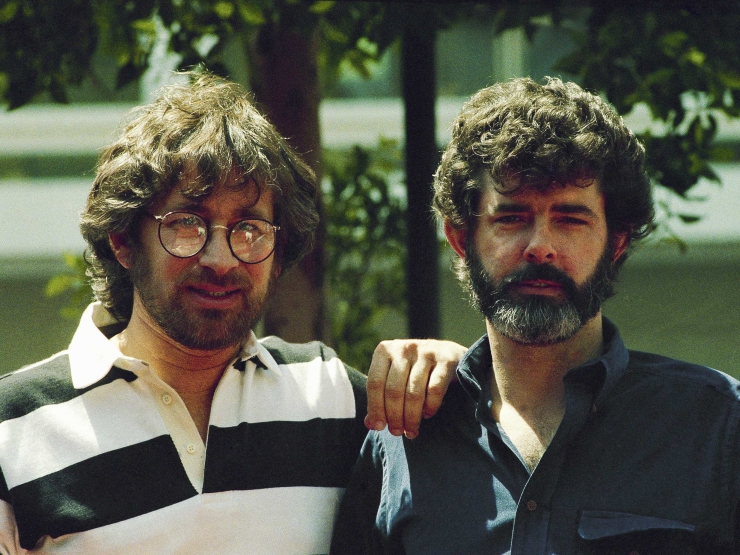
The films incredible success sparked the birth of a sequel. In 1984 Indiana Jones and the Temple of Doom was released although sadly not to the same acclaim as its predecessor. Spielberg himself has expressed negative opinions about the final product, particularly in regards to the explicit violence, calling it “too dark, too subterranean, and much too horrific.”
The film’s failure was put down to excessive dark themes, Raiders had its moments of darkness but human sacrifice, child slavery and extreme brutality seemed strangely out of place. It is easy to consider this film a failure while it stands beside its highly acclaimed counterpart but the film does have its moments, in particular the standoff between Indy and Mola Rom on the bridge. The showdown is as gripping as it is exciting, and Mola Rom’s demise within the jaws of a crocodile is a most satisfying end to a most terrifying antagonist.
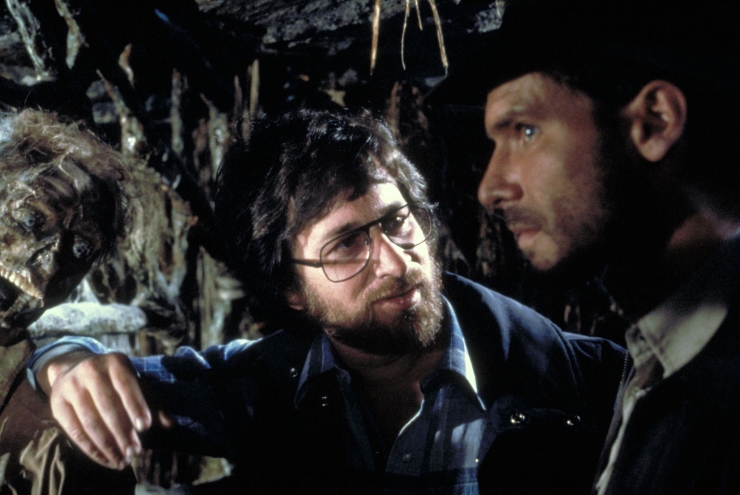
After the minimal successes of the Temple of Doom, Spielberg and Lucas collaborated together once more and their work culminated in the release of Indiana Jones and the Last Crusade in 1989. After the negative reactions toward the violence of the second film, Spielberg wisely made the choice to tone down the blood and gore for the Last Crusade. The film makes a return to the roots of Raiders, with Indy fighting Nazis who are searching once more for a powerful artefact to use for their own ends, in this instance the Holy Grail. The film adds new layers to Indy’s character that were left unexplored in prior films, through the opening sequence we see a young thirteen year old Indy earn his trademark fedora. The film also introduces Indy’s father Professor Henry Jones Sr, performed by Sean Connery who plays a key role through the films adventure. Indiana Jones’ backstory had for the most part been kept in the dark but is now scrutinised, a decision which Spielberg had been criticized for, perhaps unnecessarily. The ambiguity concerning Indy’s upbringing might have worked for the first two films but sooner or later audiences want to know more personal details about the characters they have come to love. Spielberg is no stranger to father-son relations, it being a common theme throughout his works. His ability to evoke such strong connections likely derives from his experiences with his own father after his parents divorce. The theme is strong but it does not detract through the overarching purpose of the film which is to take its audience on a wild adventure.
After Crusade, the Jones franchise was left simmering for a long time and it looked like the series was done for good until 2008 and the release of Indiana Jones and the Kingdom of the Crystal Skull. Though 19 years had passed, Harrison Ford proved that even as an older man, Indiana Jones has still got it. This film has plenty of action and adventure to go around and it reunites Indy with Marion Ravenwood, his love from Raiders of the Lost Ark, with Karen Allen reprising the role. Spielberg and Lucas return to Indy’s roots, adventure, action, an exotic temple and an evil European faction, that is what Jones is all about. The chief criticism is that there is precious little new ground broken. Indiana Jones has always had its ties with the supernatural which would make aliens seem an ideal complement to the franchise. Unfortunately it just does not pan out on the screen. If fans wanted to watch a good Spielberg movie involving aliens, then they would be better of watching Close Encounters of the Third Kind.
On that note, this presents an opportunity to discuss another of Spielberg’s incredibly successful films. Close Encounters of the Third Kind, the intellectual child to the film Firelight which he directed in his teens. Upon its release in 1977, the film became an instant hit grossing more than $280 million. You could say one of the secrets toward the film’s success is Spielberg’s natural affinity toward aliens and space. Spielberg has an undeniable attraction toward the supernatural and through Close Encounters we see that zest come to life. Like a lot of Spielberg’s films, Close Encounters is layered with themes and symbolism. The forefront of which are the religious parallels between Roy Neary and Moses, both these individuals are ‘chosen’ by beings higher than themselves. Great stories normally follow the formula of a chosen hero/heroine and Spielberg achieves that through Roy but his ultimate fate remains unknown. Faith is a component of religion and faith plays a role in the viewer’s opinion of Neary’s ultimate destiny. He goes into space but what life does he lead among the aliens, is he happy, is he sad? Spielberg tests the faith of his audience much like faith tests those with religious beliefs.
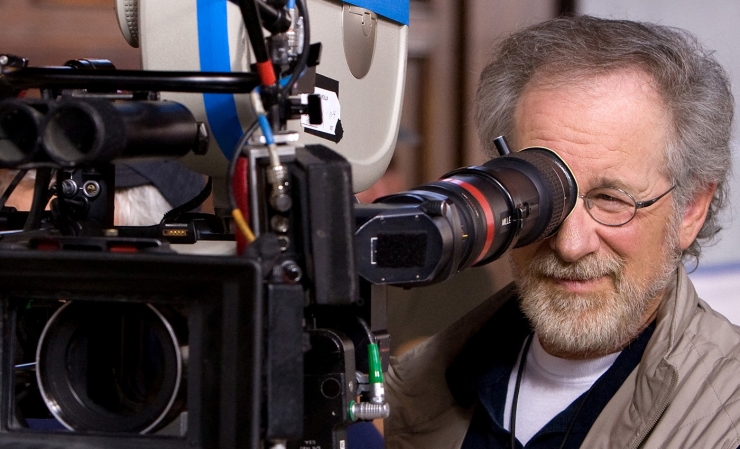
Spielberg’s 2001 film A.I. Artificial Intelligence is a film that deals with the issue of ‘surprise’ Artificial Intelligence. An android boy, David is created with the ability to love and is adopted by the Swintons for ‘testing’. Though the love he gives is real, David however is not. Spielberg is known for injecting strong underlying messages into his movies and A.I. carries its message rather openly. Is artificial intelligence a good thing? Many believe that it allows humans to play God and should artificial intelligence be officially created, it could spell disaster for the human race. 2001: A Space Odyssey directed by Stanley Kubrick highlights this issue. Yet Spielberg takes the issue in a new direction in this film, can an A.I truly love? Are these created beings anything more than an advanced computer dressed up like a doll? David’s relationship with Monica is the strongest theme throughout the film, transcending thousands of years. Monica is initially afraid of David but grows to eventually reciprocate David’s love and the two forge a strong parental bond which finally culminates in her being ‘reborn’ after thousands of years. David’s wish to become a real boy, besides being an obvious Pinocchio reference, surprisingly makes him appear all the more human. It is no surprise that this film went on to receive high praise, it is Spielberg’s deft ability to craft engaging and unique subtext into his works that makes this film a success.
It is no wonder Steven Spielberg is such an iconic household name. He possesses a rare passion for film and film making that has deep roots all the way to his childhood. His masterful ability to craft and implement meaningful messages throughout his work sets him on a pedestal higher than his peers. While his talent for evoking powerful emotions endears him to his audiences. Spielberg succeeds where others fail because of his ability to go the extra mile. That extra layer of meaning below the surface of his films keeps his audiences engaged, feeling, thinking and most of all connected to the characters.







